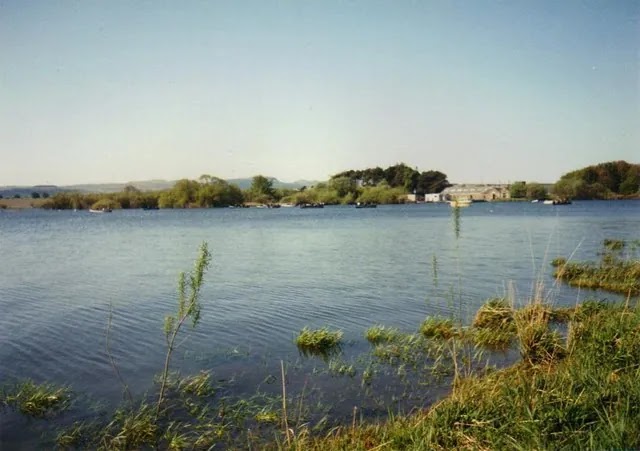
Loch Leven Fishery has been famous for its brown trout for about a hundred years. People from all over the world know about it.
This country is famous for its special brown trout called Salmo Levensis. People have used this fish to stock rivers, lakes, and lochs worldwide.
In the past, this fishing site had brown and rainbow trout. But now, it is just a natural brown fishery again, without any doubt.
The Loch covers about 3,600 acres of mostly shallow water. It is famous for fishing because it is only about 12 feet deep on average.
Brown Trout
The fish of this site grows fast and has pink flesh like a sea trout. It is famous for its strong fighting abilities. In recent years, the fish caught have been good.
Last season, they weighed between 5 and 7 lbs, much higher than usual. The water quality has improved a lot in 20 years. Bank fishing is not allowed here.
You must fish here with “fly only” and use one of the fishery’s boats. On Saturdays in the summer, people can use boats during the day, evening, and early morning.
It is a large lake in Central Scotland. It covers over 3,700 acres (1,500 hectares). The lake is famous for being a place where people go to catch wild fish.
Anglers must fish on the loch using only flies and from a boat, as bank fishing is not allowed. Loch Leven Fisheries manages the fishing site.
This fantastic site has modern Coulam boats made from glass-reinforced plastic. All boats have outboard motors and life jackets.
Anglers must return all brown trout under 10 inches in size to the loch. Anglers can catch as many brown fishes as they want at this site.
But we ask them to remember it is a wild fishery and only keep what they want to eat. Otherwise, they should release the fish.
The wild Leven brown fish has pink flesh and is delicious to eat, without any doubt. Anglers can take some home without worry.
The authority lowered the water level here and installed sluice gates from 1830 to 1832. During this time, there were many types of fish in the lake.
The water was full of nutrients. In the past, people caught different kinds of fish, like salmon, trout, pike, eels, and flounders.
Fish can no longer swim into the loch from the North Sea, so the number of species has decreased. Now, the main species are brown trout.
Pike and perch are the only ones left. Their numbers have increased. The fish of this site is often available as the perfect trout by many anglers.

People admire its elegant appearance and abilities in sport fishing. They call the species found in this venue Salmo Levenensis.
It has dark coloring and pink flesh, making it easy to identify. The trout in the lake are of high quality because many foods are available.
In the past 150 years, people put many fish in the water. They did this in places like New Zealand and South America.
In 1884, someone introduced the fishes of this site to North America in Long Pond, St John’s. It is now available in all provinces except Prince Edward Island.
This fish can mate with brown trout in different waters and lose their unique traits fast. This transformation happens even without other brown trout around.
You can only see the original trout at this fascinating site to catch fish. The fish caught there are usually around 1.5 lbs in size.
The water quality has improved, causing fishermen to catch larger fish. Anglers regularly caught trout weighing six lbs+ last year.
Alan Campbell broke the record in May 2013. The previous record had stood for a century and was 9 lbs 13 ozs. Campbell’s specimen weighed 11 lbs 3.375 ozs.
The species thrives in warm waters and temperate climates in other parts of the world. They can grow to be over 20 lbs.
Pike Fishing
Due to better water quality, the pike population has rebounded. Anglers are catching pike weighing up to 26 lbs in the Kinross Fishery.
You can go pike fishing in the winter, and the weather is good. The only days it won’t be available are when there’s a shooting.
To see if it’s open, please check the online booking system. If there are no boats, they are all booked, or the authorities can’t use them because of shooting.
April, May, and June are the best months for pike fishing on the Kinross Fishery. In mid-June, the weed beds around the Loch grow so much that the pike hide in them.
Finding the pike is difficult because the weed beds conceal them. You can fish for pike here using the same boats as trout anglers. The charges are the same for fishing trout or pike.
History of Loch Leven Fishery
The ice sheets left northern Britain 10,000 years ago. An ice block got stuck north of the Firth of Forth. It is now in southeast Scotland.
The climate got warmer, and the ice melted, creating a river at Largo Bay. The ice also made a depression that eventually became a famous fishing water.
Since the 1800s, people have moved the strain of brown fish to many new places. It now lives in Argentina, India, the Falkland Islands, Australia, and New Zealand.
In North America, it coexists with native rainbow and cutthroat trout. Fish farmers in Europe are proud that their brown fish come from this site.
It was likely colonized by sea trout after the ice melted. As time passed, the fish in the lake adapted to their environment.
Their colors helped them blend in and stay safe from predators. The fish became adapted to eating invertebrates in the lake.
They particularly enjoy crustaceans like freshwater shrimp and planktonic Daphnia. These foods are rich in carotenoids.
In the past, the number of trout caught on the fly from here was very high. Anglers caught 53,605 trout in 1929, with an average of 15 trout per acre.
Fish in the Loch have weighed around one pound on average since records started in the 1870s. It makes the pond a very productive fishery.
Nowadays, most anglers catch and release fish, making catch records incomparable. In recent seasons, catches have been recovering after many decades of decline.
The decline in water quality might be due to more people and intensive farming. Water quality in Loch has improved dramatically since Scum Saturday in 1992.
Phosphate and nitrate levels have dropped over 60% since then. This site used to be a big lake, about 4 miles long and 3 miles wide.
But in December 1830, they finished a project to lower the water level by 9 feet and make the lake smaller by about 25%.
As part of the plan, they dug a new path for the River Leven and built gates to manage the water from the Loch.
Before the draining, visitors could see the Loch in the old Kinross churchyard. The water used to touch the churchyard wall.
Conclusion
Loch Leven Fisheries manages fishing on Loch Leven. They have modern boats with outboard motors. The owner keeps these at the main pier in the southwest corner of the Loch.
There is also a shed for weighing catches, parking, and toilets. Loch Leven Trout Fishery is famous for fishing in Scotland, without any doubt.
It is also a National Nature Reserve with many wild birds and geese. History enthusiasts can explore the old Priory of St Serfs and Loch Leven Castle.
Mary Queen of Scots’ imprisonment in the castle in Scotland is famous. She escaped to England from here. Her cousin, Queen Elizabeth of England, eventually beheaded her.
- CEFN MABLY FISHING LAKES: A GREAT PLACE TO CREATE MEMORIES
- GRAIGLWYD SPRINGS TROUT FISHERY: A PERFECT PLACE FOR ANGLERS

A Bangladeshi entrepreneur. A person who loves nature, a web developer, and the founder of Srigal and Nehrin.